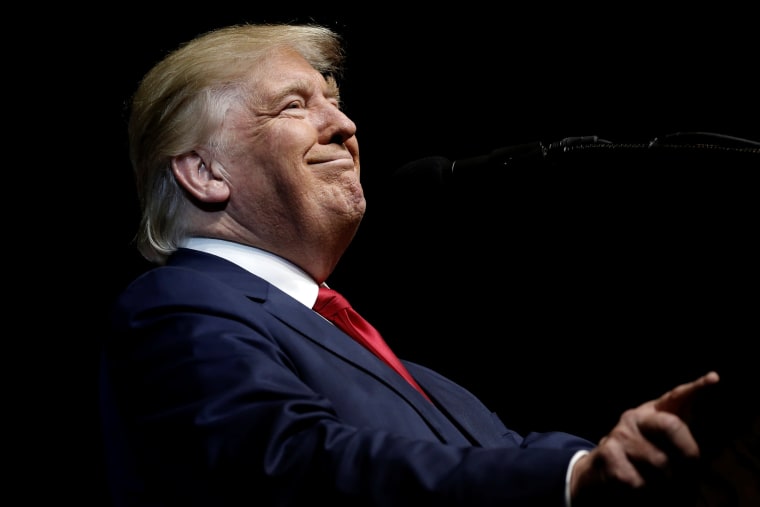Donald Trump has logged plenty of hours in front of television cameras, so at first glance, a Congressional subcommittee hearing from 1991 doesn’t seem like it would be much of a noteworthy performance in the reality-show-host-turned-presidential-candidate’s history.

But the appearance in front of the House Task Force on Urgent Fiscal Issues, Trump’s first on C-Span, is striking for what it shows about his approach to taxes, his opinion of tax shelters and the dire warnings he pronounced about the fate of the country and its economy if Congress failed to act on his suggestions.
Given the complexity of Trump’s corporate structures and the fragmentary nature of the tax returns obtained and published by the New York Times, tax law experts say that it’s hard to know just what comprises the overall $916 million loss reflected there, but it’s probable that some of it was due to changes in the tax code Trump himself had advocated for on the grounds of opening investment opportunities for average Americans and creating construction jobs to boost the economy out of recession.
“The fact is that the one word that nobody up on the panel has mentioned is the word depression, and I truly feel that this country right now is in a depression. It is not a recession,” he said in his testimony, comments that sound similar to warnings he would make on the campaign trail 25 years later.
“What’s most striking about that video is Trump has been the same for 25 years,” said Steve Rosenthal, senior fellow in the Urban-Brookings Tax Policy Center at the Urban Institute. “He’s been using the disaster shtick for 25 years.”
Among other things, at issue was a provision in the Tax Reform Act of 1986 that discouraged investors from creating tax shelters by sinking their money into real estate.
Worried about speculation that had created a building glut in major cities, leading to “see-through” office buildings devoid of tenants, lawmakers closed a loophole that limited the amount of losses a real estate investor could claim on their income taxes.
Trump argued that this and related tax code changes in 1986 closed off investment opportunities for upper-middle class Americans like dentists and lawyers and left the real estate market starved for cash.
He also objected to what he deemed a pejorative characterization of these investments.
“Some very foolish people… heard the word tax shelter and they thought the word tax shelter was a bad thing as opposed to saying it's an investment in real estate,” Trump told the task force. “The word tax shelter is like the word junk bond. It's a very bad-sounding word even though it isn't necessarily a bad thing.”
(Trump also pushed for jacking up the tax rate paid by top earners, arguing that, if given the choice between paying a higher marginal tax rate or investing in real estate, high income Americans would choose the latter.)
Similar to today, though, Trump claimed that the real unemployment rate was higher than the official rate reflected, and made his case that real estate could be the economy’s savior if the old tax provisions were brought back by spurring demand for construction.
“If you look at what's going to happen with the construction industry in the next few years, forget it. There's not going to be anybody working,” he said.
In response to a question from task force leader and New Jersey Democrat Frank Guarini about whether or not a reversal should be limited in scope to those in the real estate business, Trump pushed for a more full-scale rollback of the limitations.
“I think it has to go beyond developers because we're going to get a lot of the liquidity from people outside that are making money and can invest in real estate. Right now they can't invest in real estate,” he said.
“When the 1986 act wiped out the tax shelter, the price of the buildings fell,” said Michael Knoll, professor at the University of Pennsylvania Law School. Reversing those limitations would boost the value of Trump’s real estate holdings, which could help him in two ways: It could help him get a better sale price, and could let him borrow larger amounts on better terms against them.
In 1993, as part of a broader budget bill, Congress created carve-outs for real estate professionals to resume claiming a greater amount of losses than they had been able to since the 1986 law took effect. Some legal experts suggest it’s likely these changes helped out Trump by allowing him to rack up greater losses to offset income from other sources.
On line 11 of his 1995 New York State tax return, Trump listed losses of nearly $16 million on “rental real estate, royalties, partnerships, S corporations, trusts, etc.”
Given the scope of Trump’s businesses and what the Times called the “byzantine” web of interconnected holdings, “It is still difficult to know what is in line 11,” Taxpayers for Common Sense president Ryan Alexander said via email, but the 1993 tax code changes likely would have given him more latitude to claim losses.